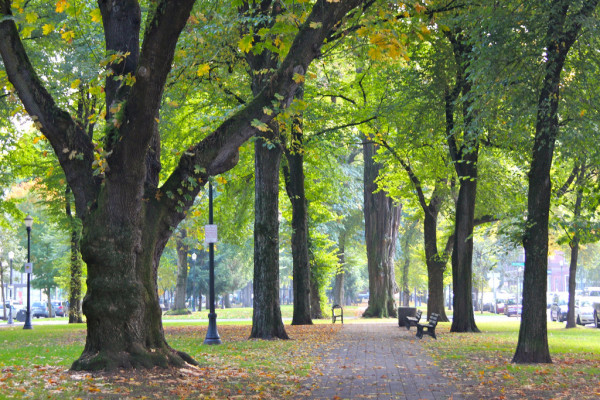Chicago has Lincoln Park, Los Angeles has Griffith Park, New York has Central Park, and San Francisco has Golden Gate Park. Besides their locations in major metropolitan cities, these parks share another feature: they’re bordered primarily by high-income neighborhoods. In low-income areas, parks and recreational facilities are often considered luxuries–bonuses on top of publicly funded necessities like schools, post offices, and fire stations. When city officials are struggling to address issues like subpar public education and overcrowded prisons, new aquatic centers and playgrounds are low on the list of civic priorities.
But research is showing that neglecting recreational spaces may not be the right approach. A number of studies are finding that parks provide more than just pick-up basketball and summer picnics; they also have an impact on physical health and well-being. One study reported that park acreage and the number of recreational facilities available are positively correlated with increased physical activity and found that creating public places for physical activity resulted in a 26% increase in the number of people who exercised at least three times per week. With over a third of American adults considered obese, parks are especially important in communities where people may not have access to other more expensive resources like gyms.
Image Source: Thomas Barwick
In addition to physical benefits, parks and recreational facilities have been shown to have mental and environmental impacts as well. One study found that access to green space may be associated with lower rates of depression, and a number of researchers nationwide have begun studying this effect. Furthermore, parks benefit the environment. In large cities, an urban heat island effect is created when buildings and pavement emit heat and there aren’t enough green spaces to absorb it. Trees reduce the intensity of this effect, reducing temperatures as much as 5-10 degrees. They also remove pollutants from congested areas and improve air quality, effectively reducing the risk of asthma and respiratory diseases. Because many low-income families live in cities–and make up nearly 15% of metropolitan populations–urban green space is extremely important for the health and well-being of these people.
The lack of parks presents a problem unique to low-income families for two reasons. The first is that low-income and non-white neighborhoods are 50% less likely to have a recreation facility in the community than white and high income neighborhoods. On top of this, a large national study has reported that income is inversely proportional to body mass index. This means that while low-income people need safe and accessible parks the most, they’re the least likely to have them.
Considering impoverished communities may benefit the most from parks and recreational facilities, it might be time for local governments to reconsider their priorities. While directly improving education and reducing crime are important, city officials should also acknowledge the impact that green spaces can have on the global and local environment, as well as physical and mental health.
Feature Image Source: Daniel Cukier










